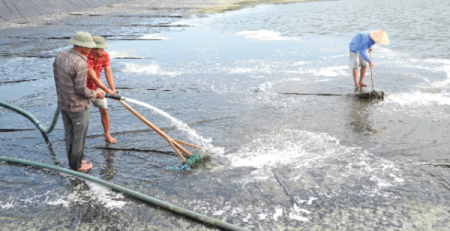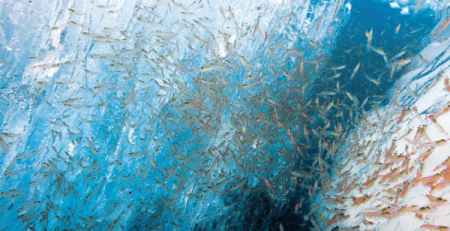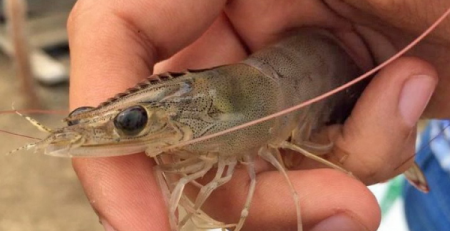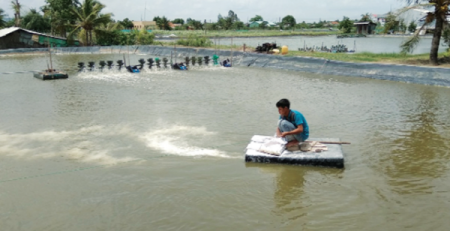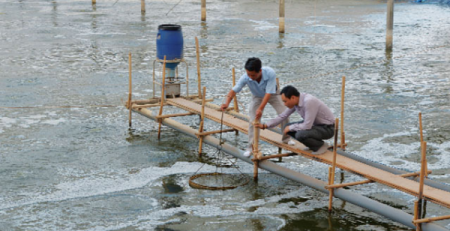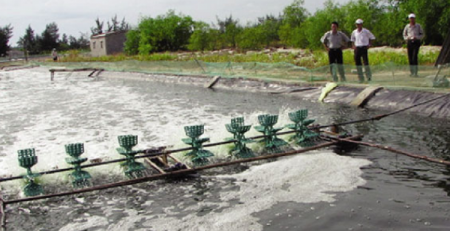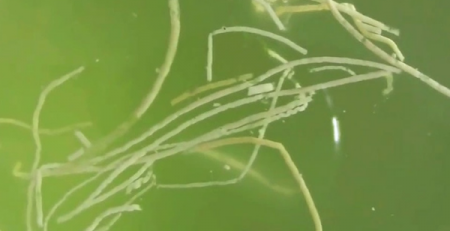Safe shrimp farming hot season
Hot sunshine, low water level in the pond, high salinity, combined with the appearance of some unseasonal rains … is identified as the main reason causing many areas of shrimp farming affected. A lot of preventive measures are needed to be effective.

Implementing measures to prevent pathogens harmful to shrimps in the hot season Photo: Vu Mua
Anti-heat solution
According to the Central Hydrometeorological Center, the drought will continue to last until about the end of May, in which there are fierce heat waves, so the salinity in the coming time will continue to rise. . At this time, some rivers and canals in many areas began to run out of water. The main diseases in shrimp also started to appear as red body, white spot, hepatopancreas … the level of damage from 30% to 50% of productivity, especially the extensive and improved extensive farming types affect.
In the coming time, the weather situation continues to be complicated, so the prevention of diseases on shrimp needs to be further strengthened. Localities should promote propaganda and recommendations to raise awareness for shrimp farmers. For shrimp ponds when detecting abnormal signs, it is necessary to immediately report to the nearest extension officer and veterinarian in order to take samples for testing, to determine the cause of the disease and promptly handle it. a successful shrimp crop, bumper harvest.
To avoid this phenomenon, farmers need:
Keeping pond with water level is higher than 1.3 m and oxygen level is always higher than 4 ppm.
Strictly control the amount of food through checking, or diving, assessing the survival rate to estimate the correct food.
Clean bottom management without viscous lubrication, stable water color, with a range of about 20-25 cm, in water with low suspended matter, less foam.
Enhance vitamins, especially Vitamin C, minerals … to supplement food.
Regular bottoms and enhances water exchange at night.
Kill bacteria and feed water when detecting dirty water and infected shrimp.
Regularly contact and grasp information on disease changes in order to take appropriate precautions.
Need to shade for shrimp ponds to help reduce temperature and fast shrimp in the hot season, while limiting algae to appear. Shading the pond but still ensuring enough light for the shrimp to grow should choose a net with a coverage of 60% of sunshine is appropriate. Besides the roof, farmers should invest in a fan. Increase the time of operation during the day to make the water always circulate; avoid water stratification. Adding probiotics to enhance shrimp resistance.
Management
Compliance with shrimp pond management rules: In shrimp farming, good management of water environmental factors is very important. If keeping the stability of temperature, salinity, pH, alkalinity, dissolved oxygen … in the appropriate threshold will help shrimp grow well. Therefore, regular checking of environmental factors and monitoring of shrimp activity. Farmers need to build their own settling ponds, take initiative in water sources and treat water before taking in ponds to create the most favorable environmental factors for the development of shrimp, as well as to limit pathogens from outside. Regularly check and reinforce embankments after each crop to avoid leakage of water from outside to or from one pond to another. If the water in the shrimp pond has a dark color, high pH, it is necessary to immediately replace 20% of the water or add water to the pond through settling pond.
In the hot season, sometimes unseasonal rains make the water environment fluctuate, need to monitor and manage the pond, in order to prevent shrimp from being shocked, affecting living activities. When there is a sign of rain, lime should be applied around the pond with a dose of 10 – 15 kg / 100 m2 to limit leaching alum into the pond. Besides, hot sunshine often causes high salinity, low transparency, high algae growth, fluctuating pH in the day, low oxygen at night … leading to slow growth of shrimp, redness due to lack of oxygen … If conditions permit, water should be supplied to compensate for evaporation. It is recommended to slowly supply water, about 20-30% of the water in the pond, supplied in cool weather, around 19 hours after night, water supply is required through settling ponds and treatment. Should use periodic biological products to help stabilize the environment, limit toxic gases in the pond.
In addition, shrimp should be stocked with moderate density for easy management. During the breeding process, the diary should also keep track of daily activities to facilitate the management of shrimp health as well as for product traceability.
Avoiding widespread epidemics, avoiding the disadvantages caused by environmental impacts, in addition to the proactive efforts to prevent diseases of farmers, local authorities need to step up many support and stamping measures. effectively translate and timely support farmers to overcome difficulties, strengthen training courses on shrimp farming techniques, capital support, strict inspection of seed quality, feed quality and aquatic veterinary medicine … to help farmers overcome short-term difficulties and stabilize production.
Source: contom.vn


